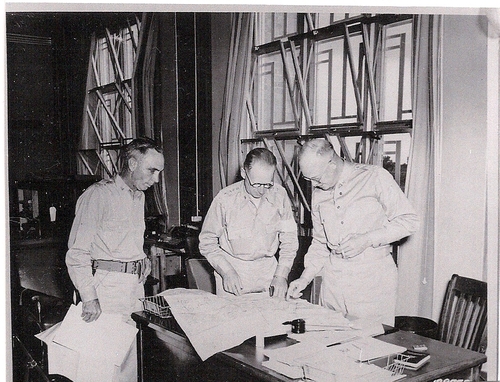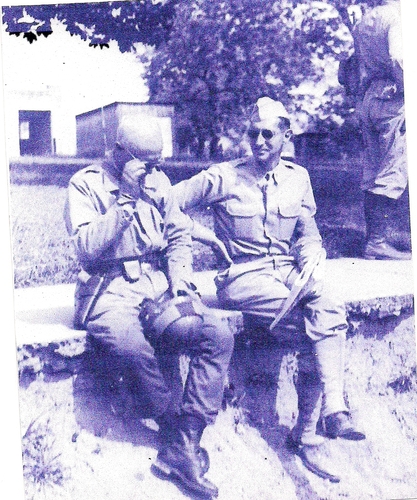.JPG)
The Careers of the Officers Involved in the Louisiana Manuevers
By Rickey Robertson
My last article concerning the 71st Anniversary of the Great Louisiana Maneuvers brought out remembrances by many folks who read the story and spurred continued interest on this historic period of time. In this story, we will look at some of the officers who were involved in the planning and implementation of these large scale maneuvers. One of the most important aspects of the Louisiana Maneuvers was to evaluate the officer corps of both the Regular Army and the National Guard. Officers from platoon level up to corps level would be evaluated. There would be various tasks and missions assigned to these many officers to test their leadership potential. Many of these officers would have very distinguished service in the upcoming war. Let's look at just a few.
The Chief of Staff of the Army was General George C. Marshall. General Marshall had the foresight to see the upcoming war in Europe. With the US Army lacking in manpower, equipment, and especially training, General Marshall wholeheartedly supported the idea of the Louisiana Maneuvers. General Marshall became the Chairman of the Joint Chiefs of Staff at the onset of World War II and led the US military to victory in World War II. After retiring from the army in 1947 he became Secretary of State in the Truman Administration. With Europe in turmoil and Berlin being cut off from the world by the Russians, Marshall came up with a plan to rebuild this war ravaged part of the world. His Marshall Plan helped to rebuild the countries that the allies had defeated in World War II. George C. Marshall was both a great soldier and a great statesman.
Dwight D. Eisenhower was only a colonel at the time of the Louisiana Maneuvers with his star only beginning to rise. As a Regular Army Colonel he was Chief of Staff for the Third Army that was involved in the Louisiana Maneuvers. Eisenhower was so thorough and concise in both the planning of the maneuvers and during the actual battles that General Headquarters in Washington immediately saw his expertise. He continued with these duties after the maneuvers ended in September 1941 and in October 1941 was promoted to Brigadier General. By March 1942 he was promoted to Major General in charge of Army Operations at the War Department and in late 1942 was promoted to Commanding General of the United States Forces in Europe. He commanded Operation Torch in North Africa in 1942, and Operation Husky in Sicily in 1943. He became Supreme Allied Commander of all forces in Europe and commanded the largest invasion force and army in the world that landed in Normandy France in June 1944. He was promoted to 5 star rank and stayed so till he retired. He followed in the footsteps of his old commander General Marshall and entered American politics where he was President of the United States for 2 terms. Do you think his planning and operational skills learned in the Louisiana Maneuvers carried over to his successful tenure in the Presidency?
Another of the famous soldiers of the Maneuvers was stationed at Camp Claiborne. He was a slim tousled haired Lieutenant with a very heavy German accent named Henry Kissenger. Yes, this was the Henry Kissenger who is still known to the American public as the Secretary of State under President Richard Nixon and the man who signed the Peace Agreement with the North Vietnamese to end the Vietnam War. As a Lieutenant at Camp Claiborne during the maneuvers he gained experience in the Civil Action Programs of governmental control that would bring about control of captured towns and territories. Lt. Kissenger was able to institute the governmental programs throughout Europe and especially in Germany during the war. He gained firsthand experience during his wartime exploits that helped him to become another great American statesman.
In my last story we discussed General George S. Patton. Let's look at his friend and later commander, Omar Bradley. Lt. Colonel Omar Bradley. Lt. Colonel Bradley was assigned to General Headquarters during the Louisiana Maneuvers but as a courier and observer in the field, he gained invaluable experience for the future. Colonel Bradley assisted in the planning of the maneuvers, and kept the General Staff in Washington, D.C. abreast of the training that was occurring during the Louisiana Maneuvers. Bradley was a fine outstanding soldier, who started being promoted as the United States entered World War II. He was involved in Operation Torch in North Africa, and the invasion of Sicily. General Bradley commanded the vast American Armies that fought through France on toward Germany. Always very popular with his soldiers, he was known as the "G.I.'s General". He was promoted to full 5 star rank and was the last living full general in the United States. He died in the early 1980's and will always be known as one of the most successful leaders in American military history.
And one last officer we look at is Lt. Colonel Mark W. Clark. Colonel Clark was a regular Army officer when the planning began for the Louisiana Maneuvers. As Deputy Director of GHQ Maneuvers, he played a vital part in getting the large area needed for this large scale maneuver. As he looked over a Louisiana highway road map, he drew out the area that the maneuvers would encompass. As with his friend, Dwight Eisenhower, his exceptional panning and logistical skills were identified by the General Staff in Washington. His career took off and he began to climb in rank. By April 1942 he was a Major General in command of II Corps. After the US entered World War II, he was sent to the European Theater of Operations as Deputy to the Commanding General. By 1943 he was the commanding general of the 5th U.S. Army in Italy. As the war progressed he was promoted to command the 15th Army Group in Italy, and by war's end he was promoted to full 5 star general rank. Before his military career ended, he was promoted to Chairman of the Joint Chiefs of Staff at the Pentagon. One of the highlights of my Dad's military service was that General Mark Clark flew into Fort Lewis, Washington near the end of the Korean War to review the troops stationed there. My Dad told of this outstanding and professional officer who he saw that day and of his actions and kindness towards the troops during the inspection. My Dad told that General Clark was the sharpest officer he had ever seen.
The Louisiana Maneuvers was full of challenges to many officers but to the younger officers, they were able to exhibit their skills and talents which would grant them opportunity to advance in their military careers. Yet to many who did not perform up to expectations, their careers would be finished . There were many more famous officers who served here in Louisiana during the maneuvers, but we are only touching on a few. One thing these officers accomplished was that they calmed the fears of the nation's civilian and military leaders in that it was now evident that the United States Army was now capable of defending our nation in the event of war.
I received some information concerning the maneuvers in my last article and would again ask you to share any stories or photos of the Louisiana Maneuvers with me. My address is 22 Peason Road, Florien, La. 71429. Thank you for your interest in this great historical event. You may have even seen some of these officers during the maneuvers. Look over there; is that Colonel Eisenhower talking with General Patton? I think it is!
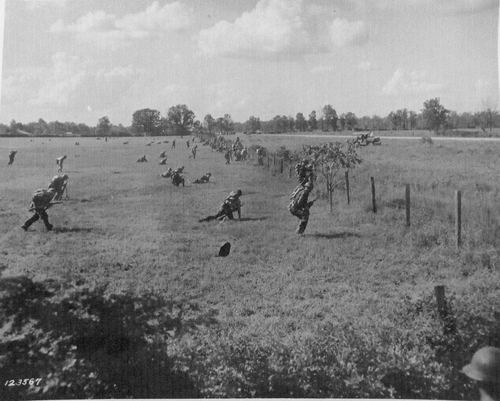
_rdax_500x333.jpg)
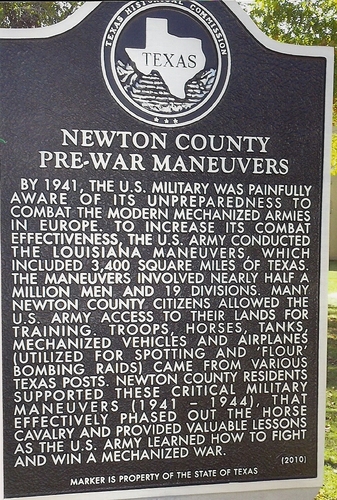
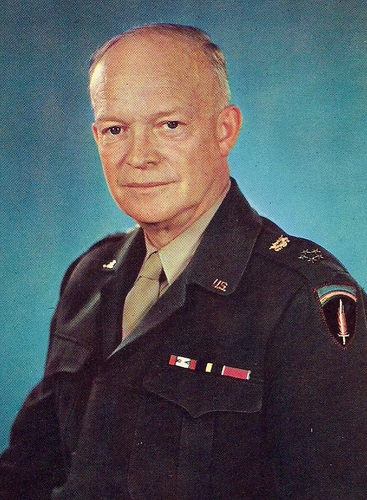
_rdax_500x349.jpg)
